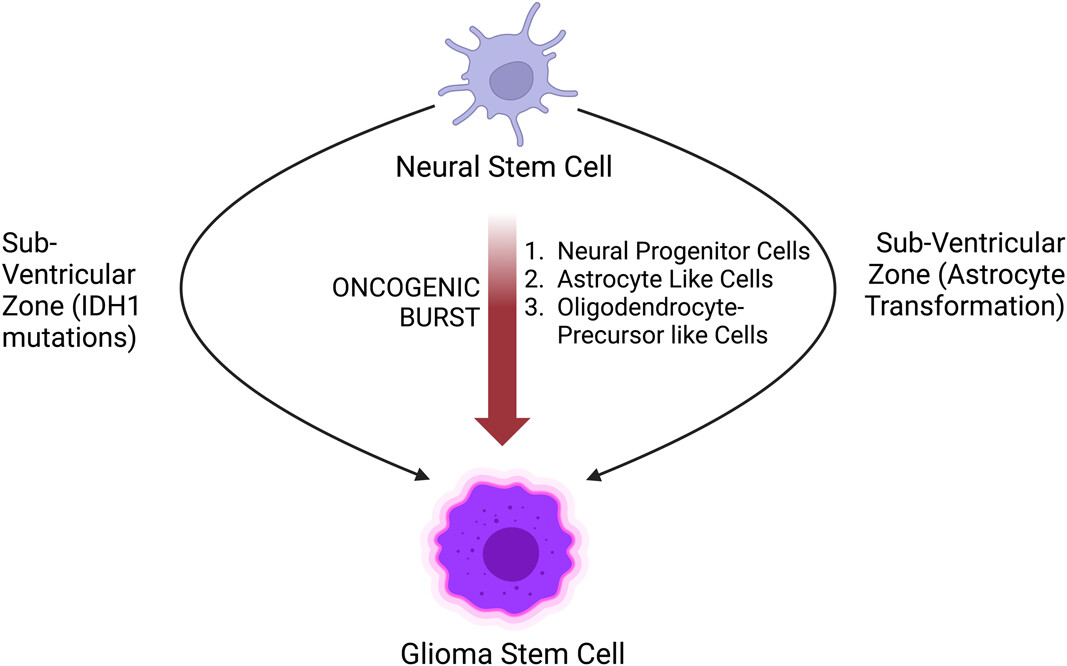MedComm-Oncology | The hidden architects of glioblastoma multiforme: Glioma stem cells

Open the phone and scan

Cell of origin of glioblastoma multiforme (GBM). There has always been a controversy in regard to the origination of GBM. While the precise cell of origin remains elusive, evidence suggests that neural stem cells or progenitor cells may undergo genetic mutations in the subventricular zone of the brain, leading to the formation of GBM. These mutations can involve genetic alterations in tumor suppressor genes and oncogenes, contributing to the initiation and progression of GBM. Other evidence state that the neural stem cells undergo an oncogenic burst before converting from a neurogenic state to a gliogenic state. The complex interplay of genetic and environmental factors influences the transformation of normal glial cells into the highly proliferative and invasive GBM cells, highlighting the intricate nature of the cell of origin in the development of this formidable brain cancer (Created by Biorender.com).
Glioblastoma multiforme (GBM), a WHO grade IV diffuse glioma, is a highly aggressive brain tumor with a median survival of less than a year. Characterized by robust proliferation and invasion, recent studies spotlight glioma stem cells (GSCs) within GBM tumors, pivotal in tumor development, progression, and treatment resistance. This review aims to shed light on the critical role of GSCs in the initiation and progression of GBM, emphasizing their contribution to tumor development and resistance to existing treatments. Unlike normal stem cells, GSCs play a pivotal role in GBM pathogenesis. The review delves into the unique characteristics of GSCs, marked by heightened metabolic activities and distinct epigenetic and transcriptional programming. Recognizing the significance of GSCs in recent years, the review examines how their presence amplifies the lethal nature of GBM. The review also critically evaluates recent advancements in glioma and GBM diagnostic methods and treatment therapies, which also include targeting GSCs. Providing a concise yet comprehensive overview, the review contributes insights into GBM's intricate dynamics, offering potential directions for future research and therapeutic strategies.
Article Access: https://doi.org/10.1002/mog2.66
More about MedComm-Oncology: https://onlinelibrary.wiley.com/journal/27696448
Looking forward to your contributions.


